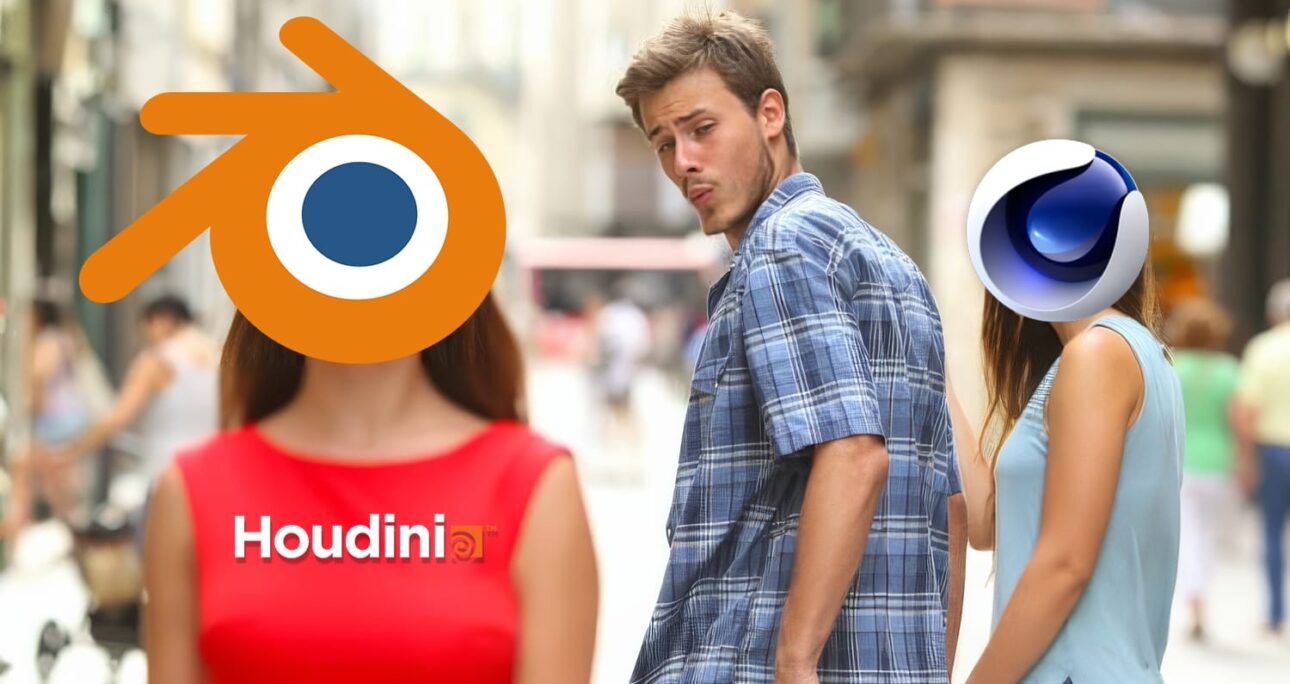In opposition to the very clickbait-heavy title of this post, I’ve always had a love/hate relationship with Blender. Primarily a Cinema 4D artist myself, I have been engrossed in the Maxon pipeline for a long time. (I get my wires crossed on this one a little, but I’m pretty sure I came into the fold with R10… though it could have been R11. Which I “acquired” from completely legal sources. 👀)
But, internet piracy aside, the suite of tools Maxon provided seemed to get better and better with every release. Sometimes it was an “S” year, meaning the updates weren’t groundbreaking, but there was always something that gave me a reason to upgrade.
Lately, however—aside from the Pyro solver, which may be the one exception—I feel like Maxon has fallen flat when it comes to updates. Speed was the big selling point in the last update, and particles the one before that. (If you have X-Particles, this was a mediocre update.) And honestly, the only things I’ve been truly excited about lately are Maxon’s other software offerings, namely ZBrush and Redshift.
Since Maxon’s particle updates let me down, I went full nuclear and introduced Houdini into my pipeline. Not only is the Indie license from SideFX worth every penny (at $270/yr. 🤯), but it also checks the particle/simulation boxes I needed it to.
But do I want to painstakingly assemble scenes in Houdini, or just use it for the particle powerhouse that it is? And furthermore, do I want to use my Houdini simulations in Cinema 4D—the very application that has let me down in this area?
Enter: Blender.

Now, this poses an interesting question… where do I start on this journey? I’m definitely not a beginner in 3D, but I’m in no way, shape, or form a Blender master.
I usually use Blender to retopo my ZBrush sculpts. (The Retopoflow add-on from Blender Market is amazing!) Or, quite literally, to open a .blend file and save it as .fbx. That’s it.
A few years ago, I gave in to Blender Guru’s tutorial and made the notorious donut, but I needed more than that to really sell me on using Blender as my main DCC. Cue SouthernShotty and Ducky 3D.
I guess I picked the perfect time to jump into Blender, as both had just released videos on their YouTube channels explaining how they would recommend learning Blender in 2025. Each provided tons of resources for diving into Blender and suggested the best creators to learn from, depending on the task.
- You might want Max Hay if you’re into sci-fi and fine art.
- You might want Ducky 3D if you’re looking to create C4D-style motion graphics.
- You might want Creative Shrimp if you’re interested in game texturing or hard surface modeling.
The point is, the Blender community is vast and full of people eager to share their knowledge—sometimes behind a paywall, but generally an inexpensive one.

So, why all this setup to explain the why behind it all? Well, I want to share my journey with everyone—for free.
I’ll be adding mini tutorials to this site to:
A. Share my knowledge and lessons with the community.
B. Reinforce my own learning in the process.
I am notoriously bad at remembering things unless I write them down… like on paper. (Digital notes just don’t sink in for some reason.) So, as I learn something new, I’m going to use my notes to create these mini tutorials—hopefully helping you on your Blender journey, too.
I’ll be starting with the basics since that’s where I’m starting myself, but I want to focus on the little “gotchas” you might run into—things like: “I used to do X in C4D, how would I do that in Blender?” (I have a feeling this is where Ducky 3D will come in handy.)
I firmly believe education should be free—or at least inexpensive. I thrive on those lightbulb moments when students finally grasp a concept that was holding them back. If I can help foster those moments, I’ll do my best to do so.
So, let’s learn some Blender, shall we?

